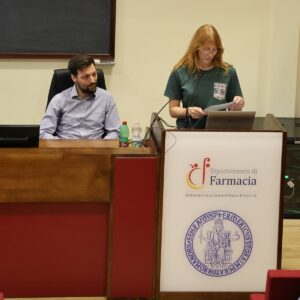Welcome to the fourth episode of In Vitro Focus, a series of in-depth articles written by our technical staff to bring you to the heart of the world of cruelty-free testing.
Together we’ll discover all the best practices, latest news, and key players in the industry that is striving to make animal testing a thing of the past.
In this issue, we will explain what the alternative methods validation process is, what it is for, what its basic principles are, its main steps, and the main bodies involved.
Current legislation
Article 48 and Annex VII of Directive n. 2010/63/EU provides that researchers may use alternative testing methods, provided that they are previously approved by European legislation through a specific validation process, in which different subjects participate.
The alternative method must be safe; this means that its results must be at least as reliable as those of the reference system, which remains animal experimentation.
The need for a validation process
The reliability of animal experimentation is around 85-90%.
This means that out of ten experiments performed with animals, nine will give reliable results.
This is a very high level of reliability in medicine, where we must take into account the fact that living organisms are never perfectly equal to each other.
Precisely because of this variability, which prevents us from achieving a result that is always 100% certain, alternative methods provide less reliable results because there is no artificial model capable of simulating all the complexities of a living organism.
And in fact, although several alternative models have been published in scientific journals, few of them have passed the validation test, i.e. have been actually authorized in practice.
Purpose and Criteria
So what does validation of alternative tests consist of?
The purpose of the validation process is to verify the performance, usefulness and limitations of an assay when it is used in the regulatory environment to support identification and risk assessment.
Validation is the compulsory “road” through which all alternative methods must pass before starting the process towards acceptance in national and international legislation.
Validation is therefore the process through which it is verified that the test under consideration is reliable, i.e. that it gives “reproducible” results regardless of the laboratory, the time of execution of the test and the different boundary conditions, that it is relevant and pertinent, i.e. that it is significant and useful for the intended purpose, and that it is effective, i.e. that it is truly predictive, able to distinguish dangerous from harmless substances.
Basic principles
The basic principles of validation and related procedures have been defined by several international bodies such as ECVAM (European Centre for the Validation of Alternative Methods), ICCVAM (Interagency Coordinating Committee on the Validation of Alternative Methods) and OECD (Organisation for Economic Co-operation and Development); these principles have general validity for all new or updated in vivo, in vitro and in silico methods used for human health and/or environmental risk assessment.
Among these principles, some of the most important are:
- the rationale for the method, its scientific necessity, and its intended regulatory purpose must be clear;
- the relationship between the parameter tested, the biological effect and the toxicological relevance must be specified;
- a detailed experimental protocol of the method (Standard Operating Procedure SOP) must be formalized and made available;
- the variability, repeatability and transferability of the method between and within laboratories must be demonstrated using a significant number of chemicals, possibly coded, representative of the type of substances for which the method will be used;
- the performance of the method must be evaluated on the basis of existing data and in relation to the target organ;
- data and experiments must be obtained/conducted according to the principles of Good Laboratory Practice (GLP).
The formalization of the validation process developed concurrently with the concept of the alternative method and the need for its regulatory acceptance
The steps
The validation process is rather long and rigid; in fact, it can take up to ten years for the completion of the 5 main phases that compose it.
These phases have been elaborated and modified several times as a result of the experience gained.
The phases of the validation process are:
- Assay development, i.e., an experimental system capable of generating information regarding the adverse effects of a chemical. The data produced must be usable for risk assessment and be at least, but preferably better, than those obtained with existing methods so as to allow a better level of protection for man and the environment;
- Prevalidation aimed at verifying the transferability of the method and the optimization of its protocol; it is a small-scale study involving several laboratories and is used to assess whether the protocol of a method is optimized and standardized to the point that it can be evaluated for formal validation;
- Formal validation involving multiple laboratories to assess the reproducibility and relevance of an optimized method. Assay performance is evaluated using coded substances.
The laboratories that participate in the validation study are part of the EU-NETVAL network and must meet minimum requirements of experience for the specific assay, staff expertise, instrumental availability, quality control of procedural steps, information storage and animal welfare (if their use is necessary).
The parameters to be evaluated are quantitative and qualitative reproducibility and predictive ability of the test; - Evaluation by independent experts (scientific peer review) not directly involved in the previous stages of method development and validation. In this phase is involved the ESAC (ECVAM Scientific Advisory Committee) composed of experts from all EU member states.
However, ECVAM is not the only body authorized to give the green light to the inclusion of an Alternative Method in the legislation; for example, the OECD has defined in a document the criteria for validation and regulatory acceptance;
- Start of procedures for regulatory acceptance, in particular for their inclusion in European Directives and/or OECD guidelines or, in the case of methods for the evaluation of biological products, in the European Pharmacopoeia, with the drafting of a recommendation on the validity of the method by EURL ECVAM.
The first draft is commented by a specialized network of PARERE (network of regulatory authorities of the EU)/ ESTAF (network of stakeholders from industry, animal welfare, research centers and universities)/ ICATM (international partners including EU, USA, Japan, Canada, Republic of Korea).
After consultation with stakeholders, who operate independently, this final recommendation is subject to implementation and drafting to become EU and globally accepted Organization for Economic Cooperation and Development (OECD) guidelines.
Main bodies
The body responsible for the validation of alternative methods is the EURL-ECVAM, the European Union Reference Centre for Alternative Methods to Animal Experimentation, hosted at the Joint Research Centre, Institute for Health and Consumer Protection (IHCP) located in Ispra, in the province of Varese, Italy, with a staff of about 60 scientists.
EURL-ECVAM is responsible for coordinating EU-NETVAL (European Union Network of Laboratories for the Validation of Alternative Methods), the network of highly qualified European laboratories for the development, validation and review of alternative methods.
All Member States assist the Commission in identifying and designating specialized and qualified laboratories, suitable for conducting validation studies of alternative methods, interested in joining NETVAL.
Each Member State is also required to identify “single points of contact” that have the task of coordinating working groups at national level and link their work with the Ministry of Health and EURL-ECVAM, in order to facilitate contacts between the parties, improving the time of validation of alternative methods.
For example, in Italy, the Ministry of Health has appointed as a point of contact the National Reference Center for Alternative Methods, Welfare and Care of Laboratory Animals, based at the Istituto Zooprofilattico Sperimentale della Lombardia e dell’Emilia-Romagna (IZSLER).





